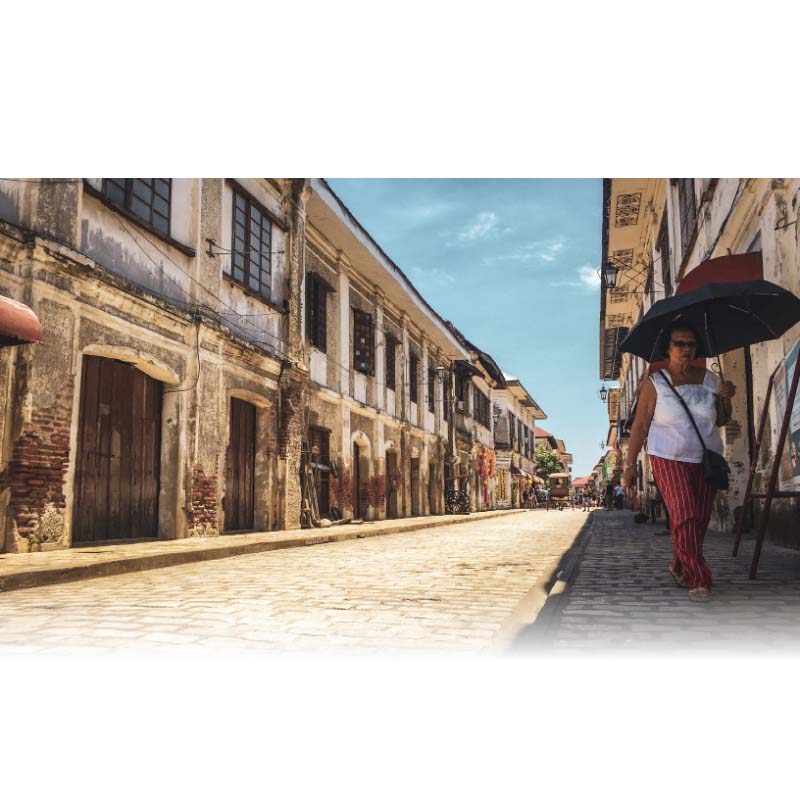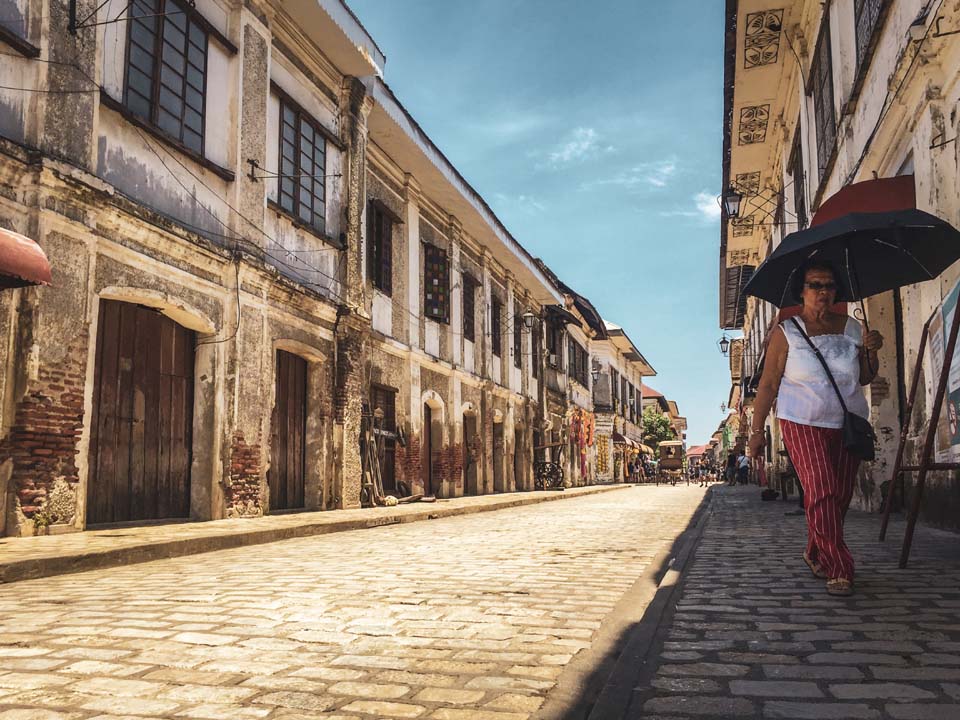
The enduring image of a well-preserved colonial-era city has made Vigan an icon of Filipino culture and a popular tourist attraction. Thousands visit this northern city to get a glimpse of its old-world charm, history and even indulge in culinary feasts.
While the “touristy” side is well-known to a lot of visitors, the ili or the poblacion seems to have two faces – one mirroring its culture of heritage conservation, the other aspiring to be a well-functional 21st-century Philippine city. The Mestizo District, or Kasanglayan, is the heartbeat of the city, and it is in this district where we see the past, the present and the aspiration for future development co-exist.
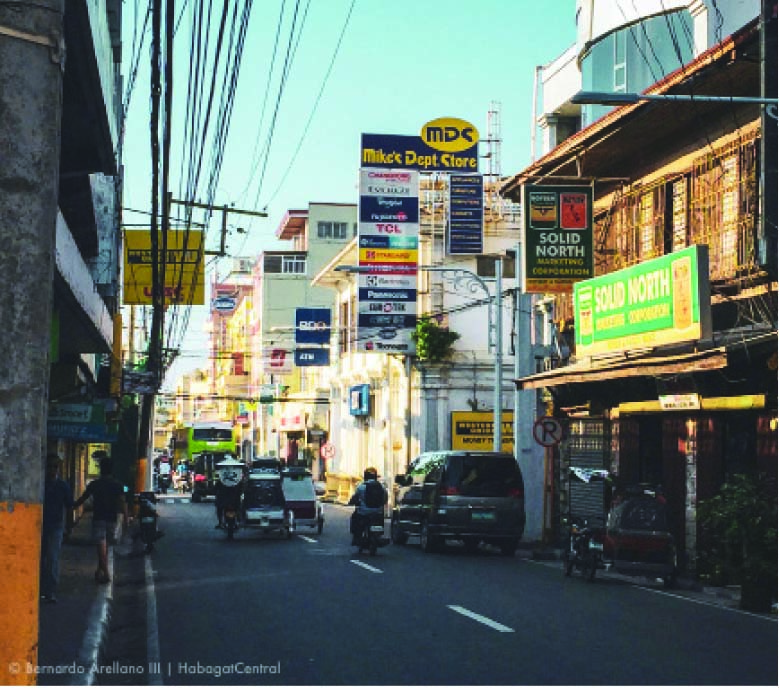
Distrito Mestizo: Kasanglayan
Downtown Vigan, where most of the heritage structures are located, was also called Mestizo District or Kasanglayan, because most of its residents are of mixed-blood, Chinese (sangley), Filipino (Ilocano) and Spanish.
However, rather than having a mix of Spanish-Ilocano roots, most of the mestizo families living here are of Chinese-Ilocano roots, or Sangley. Hence, the other name of the area is “Kasanglayan” or “Place of Sangley People.”
The Chinese migrant population in Vigan is an indication of its prominence as a trading post in northern Philippines, which is closer to mainland China and is along the galleon trade routes (Cape Bojeador route).
Evidence of Chinese roots are seen in the fu guardian dogs located in the Arzobispado and the Metropolitan Cathedral, along with some architectural semblance used in the bahay-na-bato heritage shophouses.
Several prominent families in Vigan can trace their roots to their Chinese ancestry like the Syquias, Singsons, Tongsons, Favis, Florendos, Donatos, and so on. Most also have ancestral homes within the Kasanglayan. The natives, or indios, mostly reside in Gremio de Naturales, just west of modern-day Rizal Avenue.
Unlike Intramuros in Manila, however, Kasanglayan is not a walled city.
Today’s Mestizo District has two main streets that converge into one public civic space, reminiscent of the plans of the Spaniards in its colonies, the Leyes de Indias or Law of the Indies.

Kasanglayan’s two main streets
The main streets in the Philippines are usually areas where the main commercial activities are held. Business establishments such as shops, banks, restaurants and others are found in these streets. During daytime, people converge here from different areas to do their business transactions.
In Vigan today, there are two main streets: Crisologo and Quezon. The former was once the business district, with shops and markets of the local mestizos in the big shophouses seen today. Quezon Street, on the other hand, is the current main street of the city, with shops, banks and a mall.
These two main streets are the economic drivers of the city: one for the locals, the other for the tourists. Each has its own character and “sense of place.”
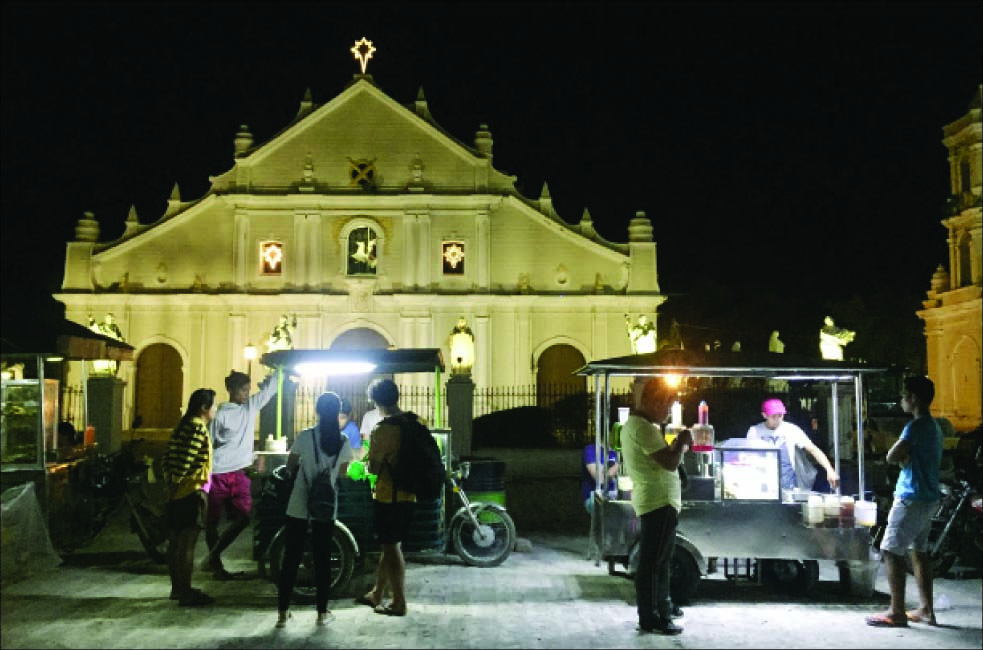
Calle Crisologo: The Poster Boy of Vigan
Crisologo is perhaps the most well-known street in the city. It is in the heart of the UNESCO World Heritage Site because of its well-preserved, imposing and grand heritage shop houses. The houses were utilitarian: offices, shops or storage areas are on the ground floor, while the upper floor is reserved for the residence.
Once the main street of the city, specifically during the Spanish and American colonial eras, it served as a mercantile hub. During the time when the entrance to the town was on the eastern side of the poblacion, the street served as the wet and dry market.
Those who grew up on Crisologo remember the scent of tobacco leaves being dried and stored in these shophouses – “pabangloti Vigan” or the “scent of Vigan.”
The street is lined with well-preserved heritage houses, mostly constructed during the Spanish colonial era and has survived wars, earthquakes, fires and even political unrest.
However, after a fire and trading hiatus, it experienced a decline and out-migration, leaving the old homes at the mercy of the elements. Today, tourists fill up the void of what was the mercantile district in Crisologo. The shophouses that once catered to the locals with its tobacco and other agricultural crops now are mostly souvenir and antique shops.
Some have been turned into cafes, others into establishments catering to the tourists who take photos and are in awe of its well-preserved architecture.
Beyond its architecture and nostalgic feel, Crisologo has more stories to tell – struggles for preservation, recognition as a UNESCO World Heritage Site in the 1990s, and the changes it has undergone.
Quezon Street: Vigan’s other main street
While Crisologo Street’s businesses tend to cater to the visitors of the city with its imposing heritage shop houses, Quezon Street caters mostly to locals.
Unlike Crisologo, however, it is almost devoid of the old houses the city is known for. One reason was the great fire that swept through the area sometime after the War, an event that is never forgotten by old-timers. But the great fire that swept through the southwestern side of the Mestizo District also blazed through the densely-packed houses.
Because it is almost devoid of heritage structures and is mostly out of the core and buffer heritage zone of the city – even if it’s only 300 meters away from Calle Crisologo – post-war architecture dominates the area. It resembles a typical Philippine small city main street that some consider characterless, except for its commercial purpose.
What it lacks in architecture and aesthetics, however, it compensates by being the city’s current main street. Most of the banks and mercantile shops are located here. The old public market site, which is now a mall, was once located along Quezon Street. The area where the street runs through has that typical probinsya commercial center feel.
And what’s interesting is that during weekdays, there are more people on Quezon Street than on Crisologo. It is the reverse during weekends and holidays when the latter takes over the city’s commercial life.
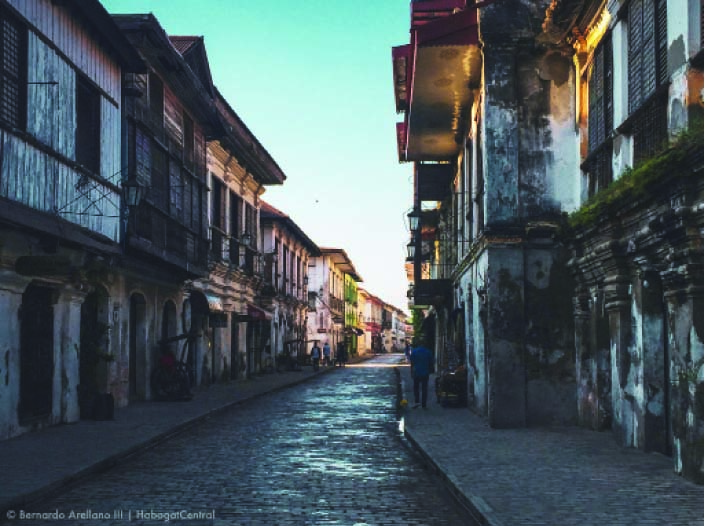
Power and convergence: Plaza Salcedo and Burgos
While the two streets are distinct in nature, people – locals and tourists alike – still converge on Plaza Salcedo and Plaza Burgos. The area is where the provincial capitol building of Ilocos Sur, Metropolitan Cathedral of Vigan, Archbishop’s Palace and Convent and city hall are located.
This is the beating heart of the traditional plaza-centric layout of Philippine towns during the Spanish colonial era, as prescribed by the Law of the Indies. The administrative power – both secular and religious – emanates from this place.
Crisologo is located on the eastern side of the plaza, along with a smaller plaza, Burgos. Quezon, on the other hand, is located on the western side – parts bordering and outside the buffer zone, except the Capitol area, which is part of the Core Zone.
Tourists and locals converge at the city’s heart – the plaza complex still functioning as it was envisioned by the Spanish colonial urban planners.
Plaza Salcedo, the larger public space in front of the capitol, cathedral, and the city hall, has a lagoon and a monument where nighttime shows of dancing fountain are watched by visitors and residents.
The plaza is also where the heroine Gabriela Silang was executed, along with other martyrs. Its expanse indicates its importance as a main town in the northern Philippines at that time.
On the other hand, concerts and other civic activities are held in the smaller Plaza Burgos. It was named after one of Vigan’s most prominent sons, and one of the martyrs that made up the Gomburza trinity. The empanada and miki noodle shops are located here.
In this plaza, the distinct characters of Quezon and Crisologo start to blur, as the shops surrounding the plaza cater not only to tourists but to the locals as well. In this area, the “two mercantile faces” of the city seem to converge.
For visitors, Vigan is the old-world charm and heritage while for the locals, it is also the home that they know.
Although Crisologo and Quezon do not have administrative borders and are within a few meters from each other, it feels like they are two separate entities. It only blurs when they converge in the plaza complex of the city – no tourists, no locals, just people wandering around and doing their own thing.
It is this interesting blend of change, familiarity, heritage and sense of place that took our fancy in this fascinating place.
